Acute. Later, community
On 10th July 1874 a group of residents met to discuss the establishment of a hospital for the reception and treatment of the sick poor of Teddington. A second meeting was held on 27th July to discuss finding suitable premises for a cottage hospital. The host of the meeting, Thomas Chappell, of the music publishing and piano manufacturing firm, offered a pair of villas for the purpose - Elfin Villas in Elfin Grove. A public meeting was held on 7th August to drum up support for the hospital; some 150 people attended.
The buildings were adapted at the cost of £149 7s (£149.35) and the Teddington and Hampton Wick Cottage Hospital was officially opened by Lord George Hamilton, M.P., on 20th March 1875, although four patients had already been admitted on 6th February.
The Hospital had four beds. Its income, apart from subscriptions and donations, was raised by various activities, such as fetes, bazaars, concerts and plays. The weekly cost of an in-patient was 5 shillings 3 pence (26p). In-patients were charged one shilling (5p) a day towards their keep, but the wines and spirits served were of a superior quality.
By 1881 the area had a population of around 7,000 people and the Hospital Committee decided there was a need to provide out-patient treatment and a free dispensary. Thomas Chappell therefore purchased a plot of land at the rear of the Hospital and presented it to the Committee as a site on which to build a dispensary. The dispensary opened in May 1883, at a cost of £446.
In 1885 the Matron resigned and the Committee decided to replace her with a Matron, an Assistant Matron and a cook.
In 1892, when the local population had increased to 10,000, the Hospital was extended. It then had 10 beds, staffed by a Matron and 2 trained nurses. Out-patients were charged 1s 6d (about 8p) for three weeks' attendance.
In 1902 Thomas Chappell died and his family donated £580 to provide a new ward in his memory.
In January 1903 the dispensary was closed and converted into a porter's lodge.
In 1904 the Chappel Ward was officially opened by his daughter. The Hospital then had 22 beds.
By 1909 the Hospital was in financial difficulties. The Editor of the Surrey Comet launched a Shilling Fund on its behalf. In less than three weeks £448 had been collected.
By 1914, although the number of beds had increased to 24, the population of the area had also grown and this bed accommodation had again become inadequate. With no further possibility of expansion on the site and the old buildings having been deemed unsuitable anyway, a fund-raising campaign began to raise money for a new hospital on a new location. However, the outbreak of WW1 caused the plans to be postponed.
In November 1914 the Committee offered to place the resources of the Hospital at the disposal of the War Office, but received no response. It was then decided, wherever possible, not to interfere with admission of the civilian sick, but to treat any military personnel as necessary (the Hospital was ringed by nine auxiliary Red Cross hospitals).
By the end of 1915, because of inflation, the weekly charge of 7s (35p) had to be increased to 10s 6d (53p).
After the war the prospect of a new Hospital was again discussed and the Committee began to explore potential sites in 1919; it was intended that the new hospital would also serve as a Memorial to the war dead.
Fund-raising began in earnest and a piece of land in Hampton Road - some 2.5 acres - was acquired for £2,000 from David Anderson, a nurseryman and the senior partner in R & D Anderson. The land was purchased, then leased back to the nursery while an Appeal was launched for funds (the vendors donated £1,000 to the Fund).
A War Memorial was erected immediately in front of the site of the future Hospital and was dedicated in January 1921. However, by this time the public had lost interest in the projected new Hospital and only £76 was raised in that year.
By 1923 the Fund contained £2,867, of which £1,033 had been received from the King's Canadian Red Cross Special Hospital in Bushey Park when it closed in 1919. Fund-raising began again in earnest and a Brick Scheme was introduced, whereby the public bought stamps at 2d each (the price of a housebrick). In the first month, some £40 had been raised (480 bricks).
A magazine called Our Town was published in 1924 to raise money for the fund; this was renamed Swan and Stag in 1925 and was published annually until 1934 (the magazines are apparently available in the Twickenham Library, while the swan and the stag became the emblem of the Hospital).
In 1926, when the Hospital had 24 beds, the average weekly cost of an in-patient was £2 11s 6d (£2.58), compared to £2 5s 11d (£2.30) in 1925. The average bed occupancy was 65%.
In March 1928 Lord Dawson of Penn, physician to the Royal family, laid the foundation stone for the new Hospital on the east side of the main entrance. Behind the stone, which is embedded in the side return wall by the front door, were placed the names of the benefactors and donors.
In 1928 the weekly cost of an in-patient was £2 11s 2d (£2.56), compared to £3 0s 3d (£3.01) in 1928. The tin foil collected by supporters of the Hospital was sold for £45 2s 0d (£45.10).
The old Cottage Hospital closed on 4th November 1929. In the 55 years of its existence, some 14,088 patients had been treated there. The building was sold for £1,210.
The partly completed Teddington, Hampton Wick and District Memorial Hospital opened in 1929. It had a spacious oak-lined hall, with a Reception and Enquiry desk, and a porter's duty office. To the right were the Out-Patients Department and Casualty Department and, to the left, Matron's office and the administration offices. An oak staircase led to the staff quarters on the first floor. The wards were housed in single-storey pavilion-style blocks, joined by corridors in a Y-shaped pattern, with a hall at the junction. The female ward was on the right-hand side, and the male on the left. Each had 12 beds and one private patient's room, and each had a loggia for use in the summer. The Hospital also had an X-ray Department and operating theatre.
A kitchen garden was at the rear, and provided fresh fruit and vegetables for the patients and staff.
By 1931 the Hospital's name had been shortened to the more manageable 'Teddington Memorial Hospital'.
The second phase of building the Hospital began in the 1930s. In 1933 an operating theatre block was built, as a memorial to one of the original founders of the Hospital, Dr. Isaac Coalbank. In 1934 a newcomer to Teddington, Mr Roy Gibson, offered to build a children's ward at cost price. The new block would also contain rooms for private patients.
The new extensions were completed and officially opened by Lady Dawson of Penn in May 1935. They included a 10-bedded children's ward and a private patients wing with four single and three 2-bedded rooms. The west wing of the 2-storey administration building contained an improved Casualty Department, a Pathology Laboratory and a consulting room. Five extra nurses' bedrooms had been added on the first floor. The east wing on the plan was omitted, and a separate building on Coleshill Road substituted instead. It had living accommodation for the porter on the ground floor and two flatlets for nursing staff on the first floor.
In August 1939, at the outbreak of WW2, the Hospital became a Casualty Clearing Station (CCS) and a Gas Decontamination Unit was built. The Hospital joined the Emergency Medical Service (EMS) and 40 of its 51 beds were reserved for civilian air-raid casualties. (In the event, only 20 beds were held for the EMS and used for people injured in the black-out). In March 1944 the Hospital's status changed from a CCS to an A.R.P. dressing station because of the flying bombs. A church on the opposite corner of the road was completely destroyed by a direct hit from such a bomb, but the Hospital was spared severe damage by the bomb-blast wall which had been built along its frontage, although the windows of the administration block were shattered and tiles torn off from the roof.
In October 1945 a Physiotherapy Department was established, with the Gas Decontamination Unit being converted into an exercise room.
In 1948 the Hospital joined the NHS under the control of the South West Middlesex Hospital Management Committee, part of the North West Metropolitan Regional Hospital Board. It was the largest GP hospital in the group, with 54 beds.
In 1954 the League of Friends was formed to provide practical help for the patients. It organised an in-patient library trolley, a refreshment canteen for out-patients and, more importantly, instigated fund-raising activities.
The Chappell Ward day room opened in 1962, financed by former patients and partly furnished by the League of Friends. The Children's Ward with its Solarium had become the male ward. In 1964 a new Physiotherapy Department opened, built to the left of the administration building. It had been financed by the local population and sponsored by the Teddington Rotary Club. In 1965 the day room for the Grace Anderson Ward opened, again financed by former patients and the League of Friends. In 1968 a day room for the Male Ward was built as part of the Teddington Hospital Improvement Scheme. It, too, was financed by voluntary contributions.
During the 1970s public donations enabled a Medical Records room to be built onto the existing Out-Patients Department in 1971, while the Board Room was converted into a waiting room for the patients. The following year the Solarium on the Male Ward was upgraded; two consulting rooms were extended, and opened as a memorial to Dr. Godfrey Morgan, a popular local GP and a member of the staff of the Hospital who had died unexpectedly in 1970. By the end of the extensions, enlargements and improvements carried out from 1962 to 1972 the Hospital had three ward Day Rooms, a Physiotherapy Department, a Medical Records office and a suite of consulting rooms.
In 1973, a large part of the Hospital grounds was taken over by the Local Health Authority on which to build the Teddington Clinic.
In 1974, following a major reorganisation of the NHS, the Hospital came under the control of the Hounslow District Health Authority, part of the North West Thames Regional Health Authority.
In 1979, the year of the Hospital's Golden Jubilee on its Hampton Road site, a bathroom annexe was built for the Grace Anderson Ward, the cost of the building and its fixtures of £40,000 being borne by the League of Friends and the local community.
In 1981 a campaign was launched by the League to raise money for a new X-ray Department but the project was put on hold as, in 1982, after another NHS reshuffle, the Hospital came under the control of the Hounslow and Spelthorne District Health Authority; it was linked with the West Middlesex Hospital.
The new Health Authority, already in financial difficulties, contemplated closing the wards at the Hospital in order to save money. The League of Friends organised a campaign to save the Hospital, collecting some 35,000 signatures objecting to the ward closure. In 1983 a 24-hour candlelit vigil was held in the Hospital forecourt, with about 2,000 people attending and signing the vigil book. A vigil candle burned for 24 hours and, to record the event, a fax was sent to the Prime Minister, Margaret Thatcher. In November, a delegation led by the local MP, Toby Jessel, met with the Minister of State for Health, Kenneth Clarke. Amazingly, the Minister reprieved the Hospital and designated it should have 27 GP beds. However, the Hospital's operating theatre closed in 1984.
Since the 1950s the League of Friends had provided much-needed funds for the improvement of the Hospital's facilities. During the 1980s the League launched an Appeal Fund to raise £285,000 for complete refurbishment of the Casualty, X-ray and Out-Patients Departments, with new waiting rooms, a Medical Records storage room and a staff dining room, as well as many other projects.
In December 1985 work began on preparing the foundations for the new buildings and, in July 1986, a foundation stone was set in the front wall of the Hospital. The newly refurbished Casualty Department and the Out-Patients Department, with its new waiting room and League shop, opened in November 1986. The new X-ray Department opened in July 1987.
The League once again lauched an Appeal in 1988 to raise £300,000 for a 22-bedded GP unit. Building work on this began in 1989, with the foundation stone being laid by the Health Secretary, Kenneth Clarke.
In 1990 Mrs Mary Baker, Director of Thames Television, opened the GP unit - the Pamela Bryant Ward, named after the Chairman of the League of Friends. The following year the X-ray Department was equipped with an ultrasound machine and a mammography unit, funded again at a cost of £150,000 by the League of Friends, supported by the Hampton Fuel Allotment Charity.
In January 1992, after another NHS reorganisation, the Hospital applied for Trust status. The Secretary of State for Health granted it shadow Trust status in April 1993, to run as a pilot scheme for other community hospitals. In the meantime, the League of Friends began another Appeal for funds to extend and improve the out-patients facilities, including installation of a minor surgery unit. The work for this was completed in 1994, the cost of £185,000 borne by the League Appeal.
In April 1995 the Hospital was granted full NHS Trust status. However, the League of Friends continued to raise funds for improvements and refurbishments. An appeal raised £160,000 to upgrade the Chappell and Anderson Wards, and £460,000 for the installation of a lift. In 1998 a Hospital Chapel for All Faiths was built, at a cost of £195,000. The Bishop of Kensington, the Rt Revd Michael Colclough, conducted the opening service, which was attended by many religious leaders and some 200 members of the community. A plaque inside the building, unveiled by the Trust Chairman, Maggi Lyne, marked the official opening.
In 1999 the Trust was enlarged to include community services. Its name was changed to reflect this - and it became the Teddington Memorial Hospital and Community NHS Trust.
In the same year, a stained glass window was installed in the Chapel. Depicting local scenes, it was donated by the League. By the end of the year, the League had donated almost £150,000 worth of equipment to the wards and various departments.
In 2002 the Hospital became part of the newly formed Richmond and Twickenham Primary Care Trust. In July 2003 the Trust received £1.5m funding to develop a Walk-In Centre at the Hospital.
In 2004 the newly modernised wards opened; Grace Anderson and Pamela Bryant Wards replaced the old Nightingale-style wards. The ward development was funded by the government at a cost of £1.94m. In the same year the League of Friends launched another Appeal, this time to raise £900,000 to modernise the Hospital. The plans included new X-ray equipment and a purpose-built, fully equipped Rehabilitation Unit. The new digital X-ray Department opened in July 2004, with the consultant radiologists at West Middlesex Hospital providing a diagnostic service.
Present status (September 2010)
This Hospital, well supported by its local population, is still operational as a General Practitioner and community hospital with 50 beds. It has a modern X-ray Department and a nurse-led Walk-In Clinic for minor injuries and ailments. In March 2010 the Teddington Memorial Health Centre, a new GP practice, opened.
The side entrance in Queen's Road leads to the newly opened £4m Teddington Health and Social Centre. The Centre, which also opened in March 2010, integrates health services with Council social care services.
The future of the Hospital remains under threat following pressure from the former government for it to form links with a larger hospital or community Trust, thereby losing much of its independence. However, the local MP, Vince Cable, has reassured the Primary Care Trust, NHS Richmond, that the Hospital's future is secure.
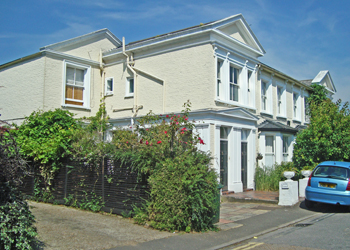
The former Teddington and Hampton Wick Cottage Hospital is now known as Elfin Lodge. It has been converted into 8 apartments.
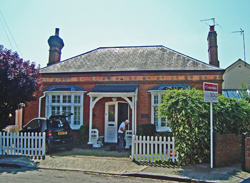
The former dispensary at No. 11 Walpole Crescent, which became a porter's lodge, is now a private residence named The Old Dispensary.
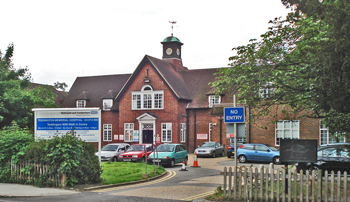
The 1929 building on Hampton Road has been much extended over the decades (above and below).
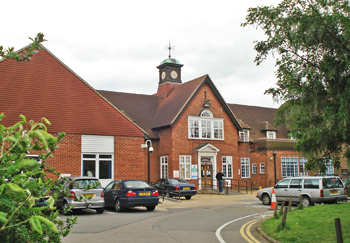
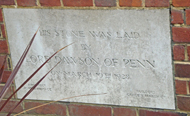
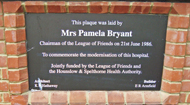
The 1928 foundation stone (left) is dated 19th March, although the ceremony took place a week earlier as Lord Dawson had a pressing engagement on that date). The 1986 foundation stone (right).
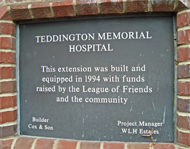

The 1994 foundation stone for the extension (left) and a foundation stone on the extension near the chapel.
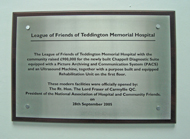
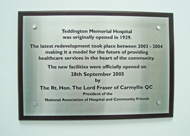
Plaques in the central corridor.
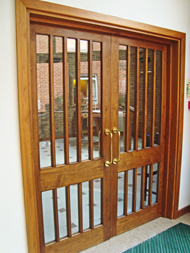

The chapel entrance (left) and the chapel interior (right).
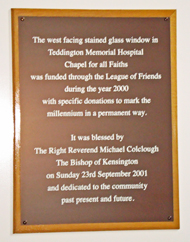
A plaque commemorating the blessing of the stained glass window which was installed to make the Millennium.

The driveway to the Medical Centre.

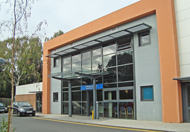
The Medical Centre (left) and its main entrance (right).
Wyatt LA 1986 The Story of Teddington's Hospitals. League of Friends of Teddington Memorial Hospital, as part of the new era appeal.
http://teddington.co.uk
www.british-history.ac.uk
www.hamptonwick.org.uk
www.richmondandtwickenham.nhs.uk
www.richmondandtwickenhamtimes.co.uk
www.twickenham-museum.org.uk
www.webspaceuk.co.uk
Return to home page